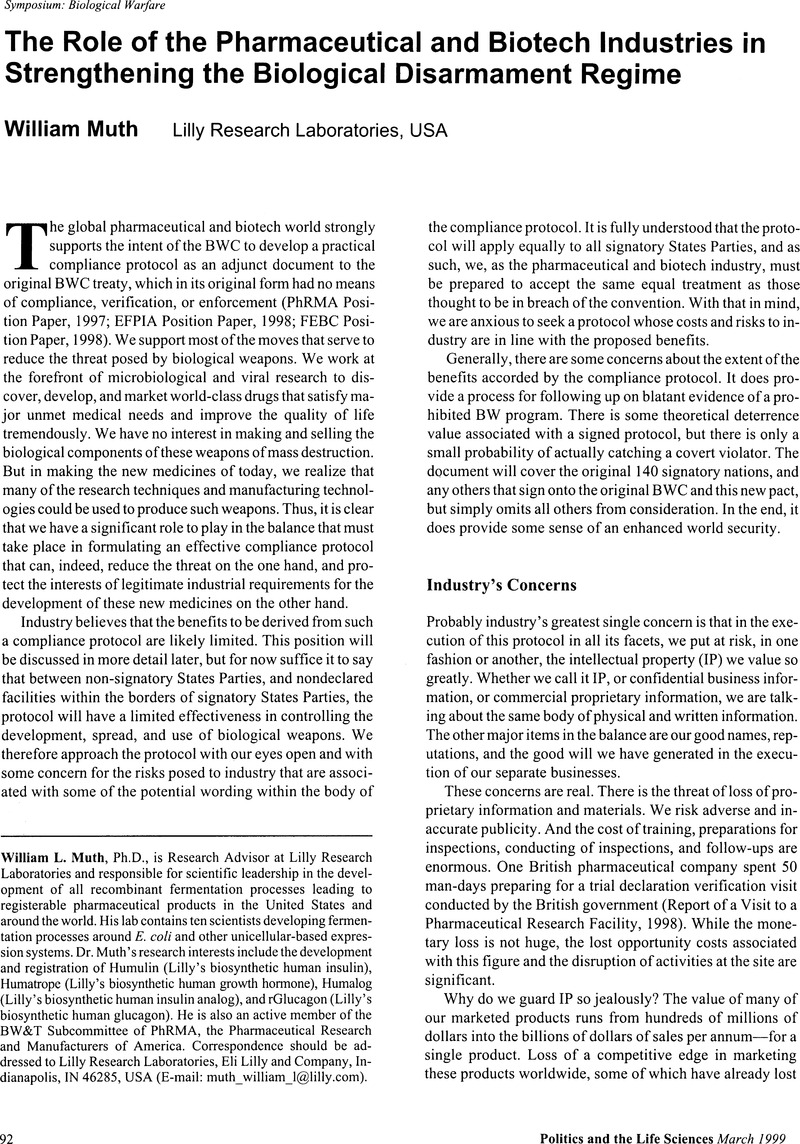Crossref Citations
This article has been cited by the following publications. This list is generated based on data provided by Crossref.
Wright, Susan
and
Falk, Richard
1999.
Responding to the Challenge of Biological Warfare—A Matter of Contending Paradigms of Thought and Action: Introduction.
Politics and the Life Sciences,
Vol. 18,
Issue. 1,
p.
55.
Falk, Richard
1999.
Assessing the Challenges of Biological Weaponry in the Late 1990s.
Politics and the Life Sciences,
Vol. 18,
Issue. 1,
p.
112.
Wright, Susan
and
Wallace, David A.
2000.
Varieties of Secrets and Secret Varieties: The Case of Biotechnology.
Politics and the Life Sciences,
Vol. 19,
Issue. 1,
p.
45.



